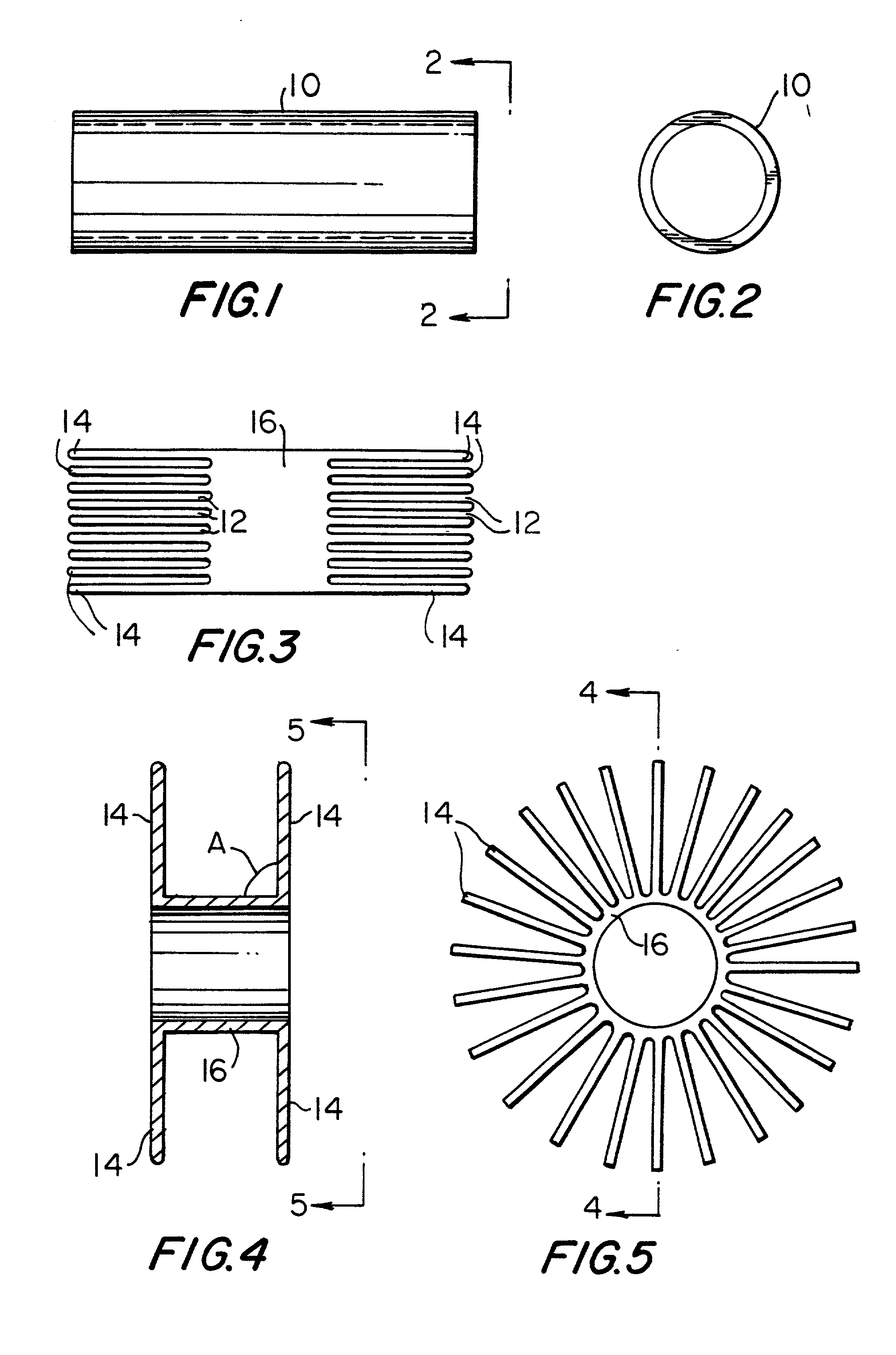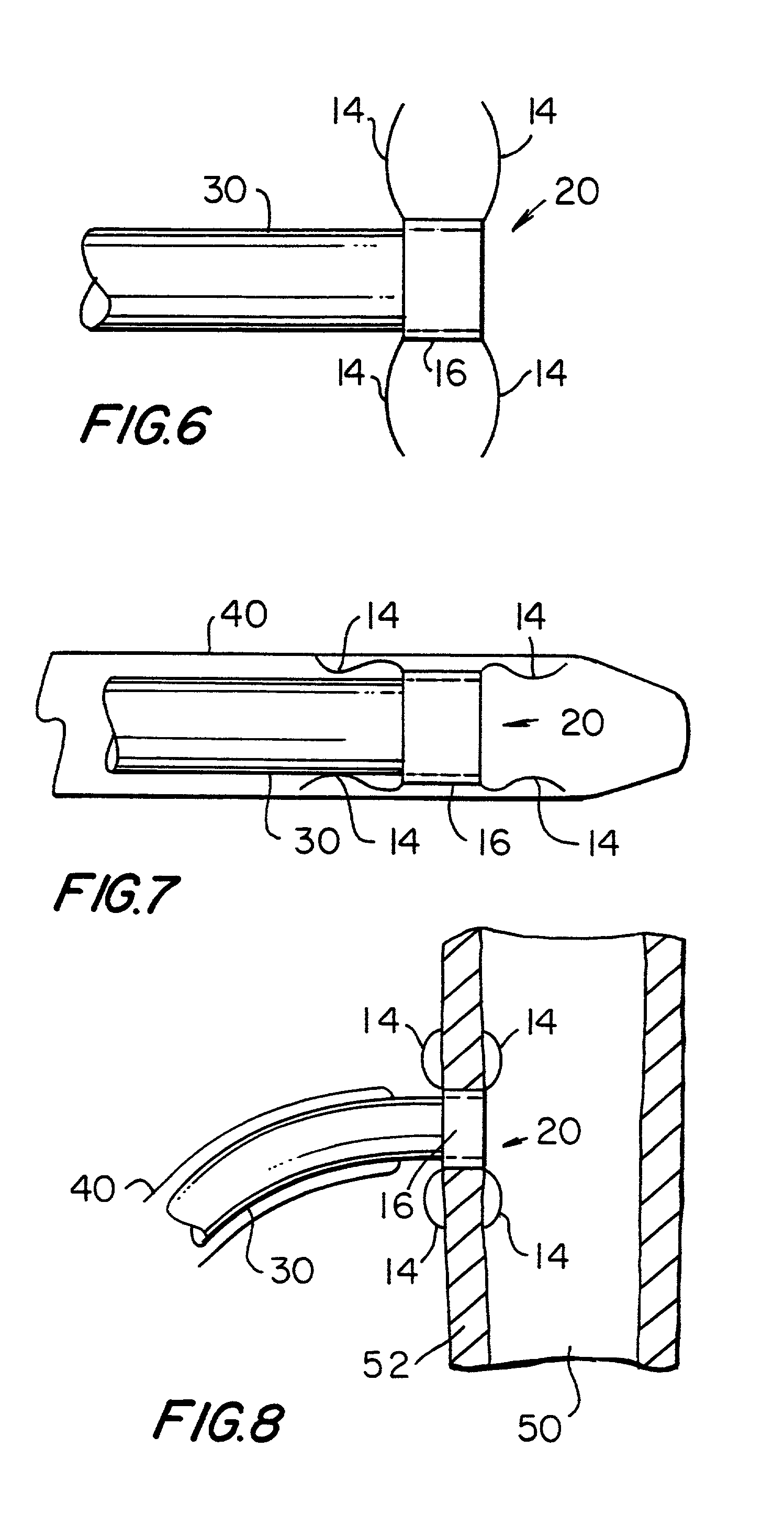Medical graft connector or plug structures, and methods of making and installing same
a technology of medical grafts and connectors, applied in the direction of surgical staples, prostheses, blood vessels, etc., can solve the problems of difficult, time-consuming, difficult or even impossible to make such connections using suturing
- Summary
- Abstract
- Description
- Claims
- Application Information
AI Technical Summary
Benefits of technology
Problems solved by technology
Method used
Image
Examples
Embodiment Construction
[0042]An illustrative starting component for the connector or plug structures of this invention is a hollow tube 10 as shown in FIGS. 1 and 2. Tube 10 may have any length, diameter, and wall thickness suitable for the intended use of the finished connector or plug structure. For use as a cardiac bypass graft connector, for example, tube 10 may have a diameter of about 4.0 millimeters, a wall thickness of about 0.003 inches, and a length of about 7.0 millimeters. It will be understood, however, that these specific dimensions are only exemplary, and that any other dimensions can be used instead if desired. The material of tube 10 is preferably highly elastic. A particularly preferred material is nickel titanium alloy (nitinol) metal (which can be per se conventional), but other materials such as stainless steel or thermoplastics can be used instead if desired.
[0043]A first step in processing tube 10 in accordance with the invention is to cut into it substantially axially at many locat...
PUM
 Login to View More
Login to View More Abstract
Description
Claims
Application Information
 Login to View More
Login to View More - R&D
- Intellectual Property
- Life Sciences
- Materials
- Tech Scout
- Unparalleled Data Quality
- Higher Quality Content
- 60% Fewer Hallucinations
Browse by: Latest US Patents, China's latest patents, Technical Efficacy Thesaurus, Application Domain, Technology Topic, Popular Technical Reports.
© 2025 PatSnap. All rights reserved.Legal|Privacy policy|Modern Slavery Act Transparency Statement|Sitemap|About US| Contact US: help@patsnap.com



